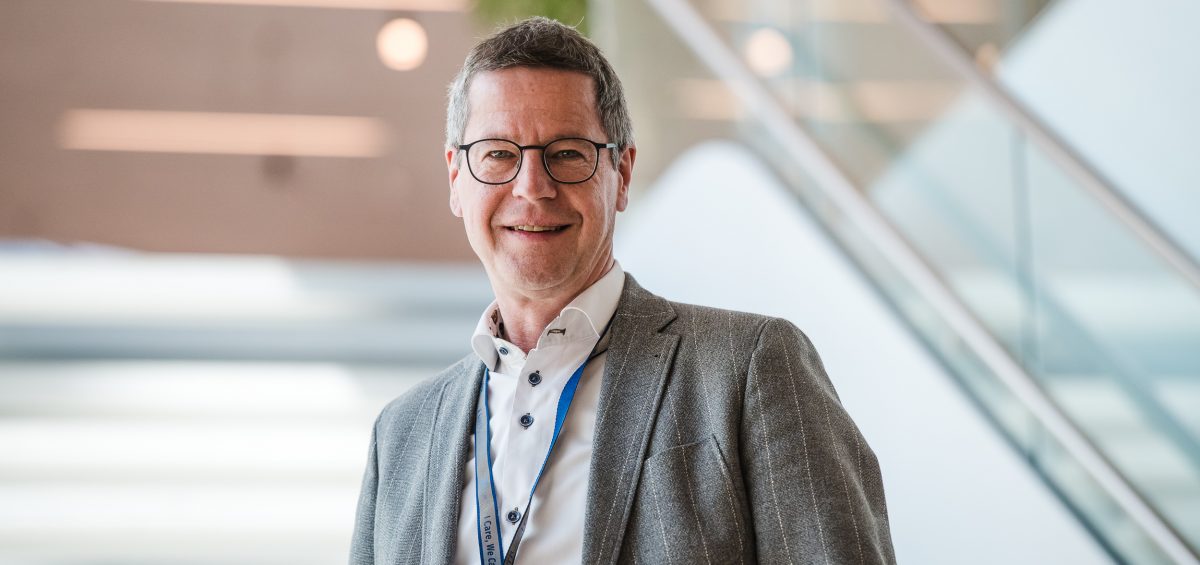Koen Janssen of DSM Biomedical has been working at Chemelot for 25 years now. He believes Reshaping Tomorrow’s Energy is a great project, and one he is happy to work on. “People should behave the same way at Brightlands Chemelot Campus that they do in their own homes. Leading by example is essential to this.”
“Whenever I see lights on somewhere unnecessarily, I get up and go turn them off. People’s responses are usually, ‘Sorry, I forgot again.’ Showing exemplary behavior as a leader is essential to initiating behavioral change.” Janssen likes to draw the comparison with someone’s situation at home. “You don’t leave your lights on all night at home either. People need to see how important this is to our business, and that we shouldn’t waste money that we could be spending on research.”
‘You don’t leave your lights on all night at home either’
Behavior is the most important factor
The most important factor in the desired improvements is the behavior of people themselves. Janssen would like to see people start living at the campus the way they do at home. “The advantage of rising prices is that it prompts people to take action. This is happening in our homes too, so that same realization should sink in here too. The lighting is centrally controlled in most offices, but in some rooms you have to turn the lights on and off manually. These are just little things, but for me, it’s more about the mindset required to achieve savings. The key is to constantly keep the focus on the message.”
Hotter in summer, colder in winter
DSM is working with the campus to program the thermostat to ensure it can be set higher in the summer, but lower in the winter. “It’s still too cold here, even now,” Janssen says. “And I’m also hearing this from people on the work floor. The temperature really can be set higher.” Other climate control settings are also under scrutiny, such as the humidity injection system in the labs. This is an expensive process that also makes it harder to heat a room. “It requires a lot of energy, so we’re going to look at ways we can reduce the humidity level. Humidity also has an adverse effect on dry substances or coatings on applications. This also creates problems during the summer. And while this requires precision, it could also generate savings.”
Closing fume hoods yields another important benefit
Laboratories are the most expensive spaces at DSM, and this doesn’t just apply to the rent, but also energy management. Jozef Hurenkamp pointed this out earlier in this series’ first blog post. Janssen agrees that the greatest potential savings can come from being consistent about closing fume hoods. Another important benefit of doing this was noticed during a recent safety tour. “We stopped at an open fume hood to have a listen; when it was closed, the air flow stopped, but it also got quieter. People noticed that immediately. When you have an airflow from the room to the fume hood, it can make a lot of noise. Closing it not only helps save energy, but also gives people peace of mind in the labs. This insight obviously made an impression; all of the fume hoods were closed during a later tour.”
‘The temperature really can be set higher’
More insight into energy consumption
DSM is located on three floors, but there are no figures for each floor. Janssen would like to gain insight into energy consumption. “We’re working with the campus now to find out how we can arrange this on a floor-by-floor basis. It should be possible to present the numbers to the tenants to provide everyone with concrete proof whether or not the efforts are paying off.”
Customize message for recipients
Janssen believes that this message about savings must be conveyed in a way that will be understood by the recipients. Born and bred in Flanders, he says, “In the Netherlands, people always want to understand why they have to do something, when they have to do it, and why they are the ones being asked to do it. These three questions always come up. However, once they are convinced, the ‘polder model’ works very well, and everyone just does it.” He points to the many scientists working in Brightlands buildings. “Scientists love a sound foundation, and numbers are part of this.”
‘We want to go from steam to electricity’
Investments
In the long term, Janssen would like to invest in a heat pump. “The building we’re in now is heated by steam, but we actually want to go from steam to electricity. This is incidentally the direction the campus wants to pursue as well, but you’re talking about an investment of between 10 and 15 million Euros. This isn’t something you can arrange and finance just like that.” The fact that the investment can pay off is something Janssen sees at the neighbors’ facility, in Building 93. “Sabic made the investment a few years ago and now saves substantially on its energy bills. It’s worth it, particularly if energy prices remain as high as they are now. I want to team up with the campus on this; after all, we all have the same goals.”



